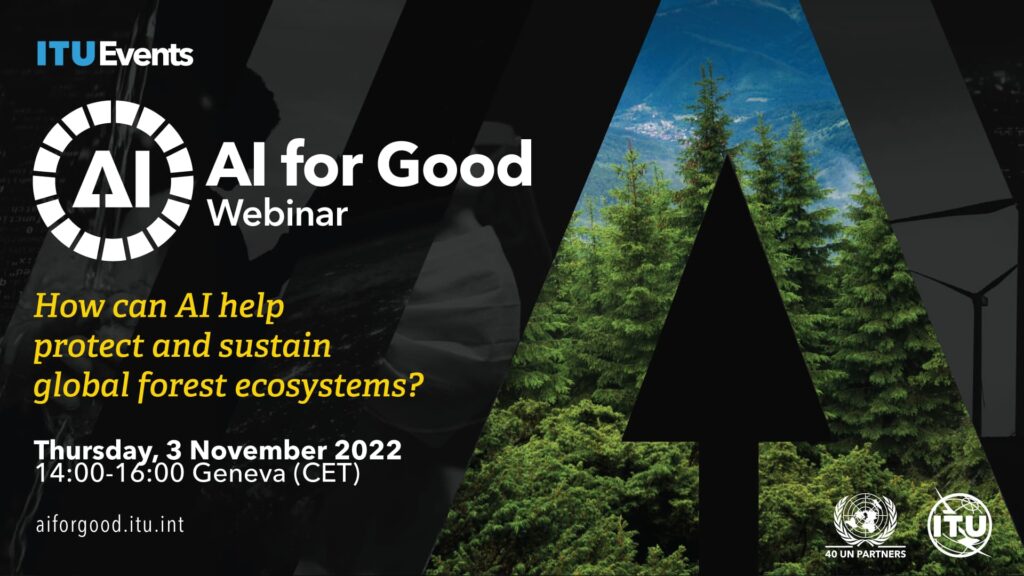Forests are crucial in our fight against the climate crisis
Since 1990, the area of primary forest worldwide has decreased by over 80 million hectares through deforestation, forest degradation, and wildfire – that’s according to Food and Agriculture Organization of the United Nations. Recent wildfires in unexpected places such as the Amazon rainforest, and downtown London, have sparked awareness from those outside conservationist circles. Without high quality forests, humanity faces consequences far more serious than the lack of a shady picnic spot in a favorite city park – air and water pollution (relevant to UN SDG 3), habitat and biodiversity loss (SDG 15), the warming of cities and the earth itself (SDG 13) all increase when forest areas decrease. Our forests, the role they play and the ecosystems they support, are in danger.
To support the 2030 UN Sustainable Development Goals in the realm of forests, our data-rich world can be leveraged, combining data and Artificial Intelligence (AI) solutions as a catalyst for solutions to protect forest ecosystems. With these tools, scientists and policy makers are provided insight into what is happening (observing meteorological patterns in real-time) why it is happening (through reliable analytics skills along environmental information), and what will happen next (future predictions based on past patterns).
Finally, data & AI can be positioned to also help in suggesting decisions, based on an understanding of what future action could best fit the context of what happens and why (prescriptive decision making). The mastery of the informational environment thus supports humans in protecting and sustaining biodiverse environments.
We need to meet forests with a data-driven approach
Tangibly, these solutions fall into three use cases: observing, defending, and sustaining forest ecosystems. Researchers observe forests, primarily with satellite imagery, which accurately tracks changes in forest cover from space. When paired with algorithmic models, they can track the quality and type of forest, annual deforestation changes, the appearance of invasive or non-native species, and the effects climate change has had on land. These observations can come in near real-time, with extremely high accuracy, and with lower costs than ever before due to the automation power of AI.
With this observational data in hand, citizens and policy makers can then defend forests from persistent threats. Predictive AI can use descriptive data from forests to predict the size, spread, and probability of a fire outbreak in a certain area. When fires do occur naturally, scientists can leverage machine learning techniques to characterize the type of fuel feeding the flames, detect and map existing fires, and predict fire behavior and effects to keep fire-fighting crews safe.
Observing and defending forests benefits the multitude of SDGs that forestry touches. Managing wildfires reduces the loss of land available for farming (and thus prevents hunger, SDG 2), reduces damage to human infrastructure (SDG 9), and reduces air pollution caused by burning carbon (SDG 3). By observing the quality and type of trees, researchers are able to preserve habitats and forest carbon sinks – benefiting life on land and climate action SDGs (13 and 15).
Actions for the future
Responding to threats, however, will never rebuild the forest lost in the past – for this, proactive measures to enhance forests must be taken. Reforestation efforts are enhanced with predictive analytics, combining forest data with machine learning algorithms to determine which species of new tree should be planted in which soil and forest type. Drones are applied in a planting capacity, especially in difficult to reach areas. It takes several decades to regrow trees to see the same level of carbon sequestration attained by those lost to deforestation, some of which have existed for several millennia – the sooner we can plant and incubate new life, the better off we will be in the future.
“In addition to reforestation efforts, AI and data techniques are empowering urban forests, which are important tools to mitigate stormwater, cool air temperatures, improve air quality, and enhance the livability of communities when cities experience heatwaves.”
A key example of this is the Google Tree Canopy Lab in LA, which is able to map the density of tree cover in cites using satellite imagery and a tree-detection AI, allowing policy makers to identify neighborhoods that would benefit from an increase in greenery.
Making the difference – data & AI helps, but commitment will come from humans
Data and AI are game-changing tools when supporting and counteracting the degradation of our world’s forests, but rather than relying upon the existence of new innovations, it is a commitment to action that will be decisive.
To reach the SDGs, humans need to make critical decisions on how to best leverage technology as enabler for our commitment and ambitions on how to better understand, protect and enhance forests.
To know how can AI help protect and sustain our global forest ecosystems register for the upcoming webinar here:
















